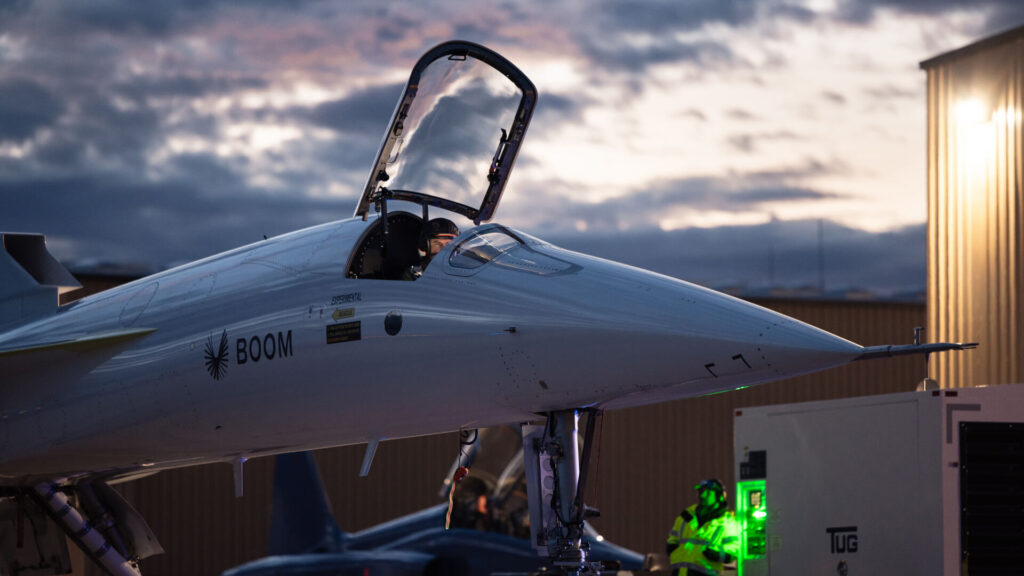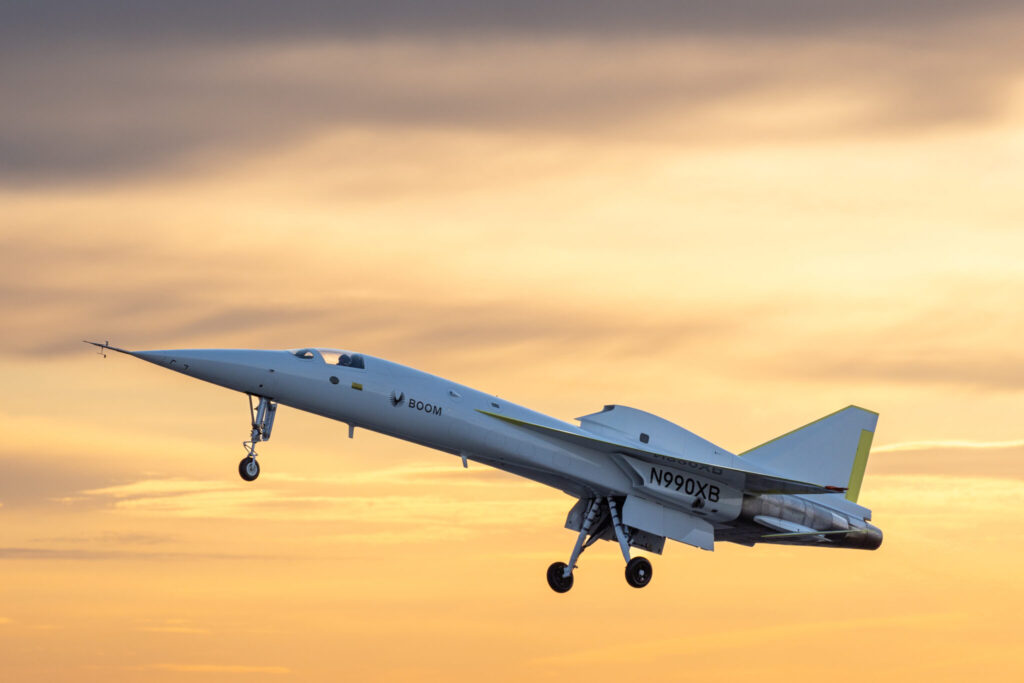Boom Supersonic hopes to revolutionize air travel by reintroducing supersonic passenger flights. The company has amassed over $700 million in funding, with notable contributions from entities like Japan Airlines, and has chosen Greensboro, North Carolina, for development. Additionally, it boasts over 130 preorders. A significant milestone was reached with the production of the Boom XB-1 “Baby Boom” demonstrator, which is one-third the size of the planned Overture passenger aircraft. The Baby Boom is designed to fly at Mach 2.2 for more than 1600 kilometers. The final Overture aircraft will accommodate 65 passengers and cover a range of 7870 kilometers. Boom Supersonic aims to have the Overture operational by 2030.
A major accomplishment was just achieved with the first test flight of the Baby Boom. The XB-1 successfully took off at the Mojave Air & Space Port in Mojave, California. Boom extensively utilizes carbon fiber composites and 3D printing in its construction, indicating that its success could have major implications for the 3D printing industry as well.
“Today, XB-1 took flight in the same hallowed airspace where the Bell X-1 first broke the sound barrier in 1947. I´ve been looking forward to this flight since founding Boom in 2014, and it marks the most significant milestone yet on our path to bring supersonic travel to passengers worldwide,” said Boom Supersonic CEO Blake Scholl.
Chief Test pilot Bill “Doc” Shoemaker, flew the XB-1 while Test Pilot Tristan “Geppetto” Brandenburg flew a T-38 chase plane to collect data and monitor the flight.
¨In preparation for flying XB-1, Geppetto and I have spent many hours studying XB-1’s systems and flying the simulator. We also maintain currency in T-38 and F-5 aircraft. Flying these aircraft allows us to develop chase procedures, practice flight test techniques that we will use in XB-1, and get very familiar with the airspace where we will fly XB-1. Like most prototypes, we expect XB-1 to be relatively demanding, and flying high performance aircraft allows us to keep critical skills sharp,” stated Shoemaker, who has piloted over 50 aircraft.
Other companies, such as Hermeus with its focus on hypersonic aircraft, Spike Aerospace with its interest in supersonic jets, and the US Air Force’s investment in hypersonic technology, have not aligned around a single engine or engine family. One possible solution could be to develop engines that can be used for both one-time use in missiles and long-term use in jets, which could help distribute costs and satisfy all parties involved.
For now, Boom plans to create its own engine in collaboration with Florida Turbine Technologies for engine design, GE Additive for additive design consulting, and StandardAero for maintenance, repair, and overhaul (MRO) services. Building a supersonic airliner is a formidable challenge, and crafting an engine may be an even more intricate endeavor. However, the company appears to be making progress on the rest of the aircraft. It is assembling its supplier base and has secured partnerships with several key companies: Aernnova for the wings, Leonardo for the fuselage, Aciturri for the aircraft’s tail and stabilizers, Honeywell for the integrated flight deck and avionics, French group Latecoere for the electrical wiring interconnect system (EWIS), ADI for testing and digital twin software, Collins Aerospace for ice protection, EATON for the fuel systems, Safran for landing gear and controls, and Flight Safety for training. Indeed, it takes a village to build a supersonic airliner. While Boom’s ambition is commendable, the immense challenges ahead are undeniable.
Subscribe to Our Email Newsletter
Stay up-to-date on all the latest news from the 3D printing industry and receive information and offers from third party vendors.
You May Also Like
Gorilla Sports GE’s First 3D Printed Titanium Cast
How do you help a gorilla with a broken arm? Sounds like the start of a bad joke a zookeeper might tell, but it’s an actual dilemma recently faced by...
Nylon 3D Printed Parts Made More Functional with Coatings & Colors
Parts 3D printed from polyamide (PA, Nylon) 12 using powder bed fusion (PBF) are a mainstay in the additive manufacturing (AM) industry. While post-finishing processes have improved the porosity of...
$25M to Back Sintavia’s Largest Expansion of Metal 3D Printing Capacity Since 2019
Sintavia, the digital manufacturing company specializing in mission-critical parts for strategic sectors, announced a $25 million investment to increase its production capacity, the largest expansion to its operations since 2019....
Velo3D Initiates Public Offering in a Bid to Strengthen Financial Foundations and Drive Future Growth
Velo3D (NYSE: VLD) has been among a number of publicly traded 3D printing firms that have attempted to weather the current macroeconomic climate. After posting a challenging financial report for 2023,...

































